#to read later
Note
Hi, just a heads up, re: the post about Korean women and misogyny you reblogged, the 4B movement is very transmisogynistic. A Korean trans woman speaks about it in this reblog https://www.tumblr.com/ruisa-faa/746773002897768448/the-post-above-is-incredible-because-its-actually/ and this person links to a JSTOR article with more on the subject https://www.tumblr.com/hatingongodot/746800474606518272
Thank you very much for this! Chucking it all into my 'read later' tag atm, so this will be super helpful, thank you
82 notes
·
View notes
Text
Fashion Books on the TBR

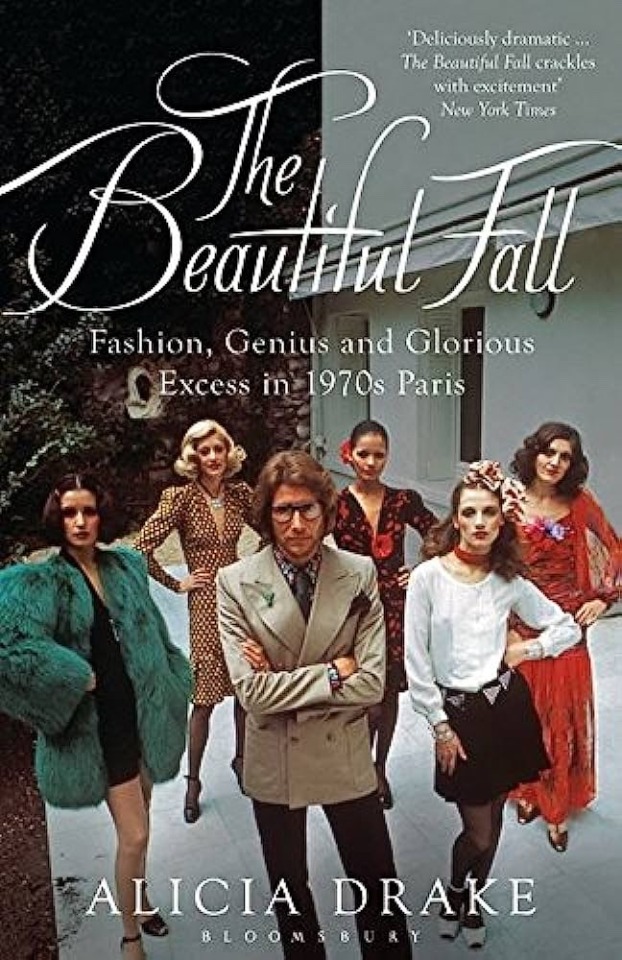
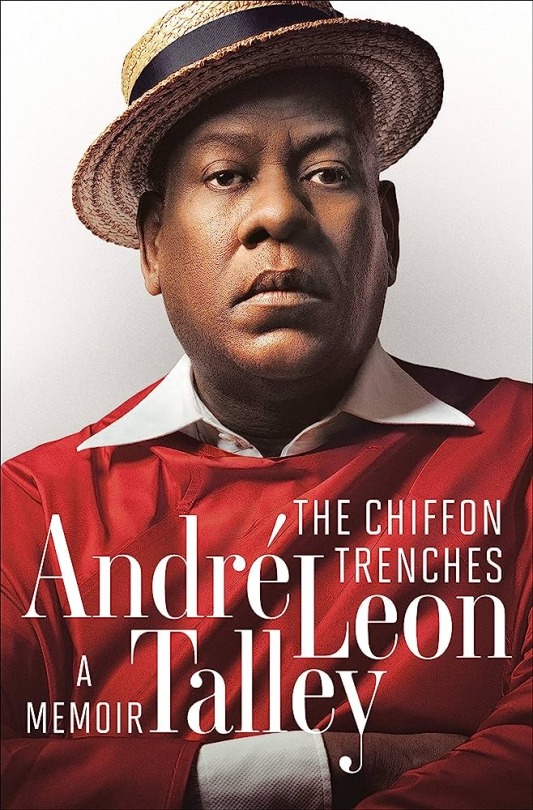

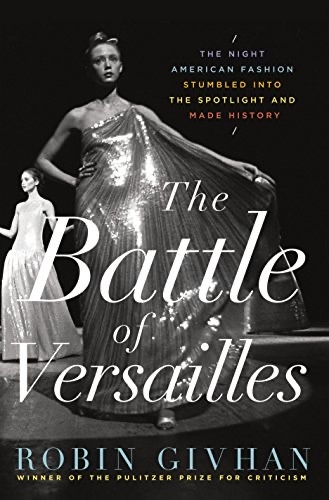
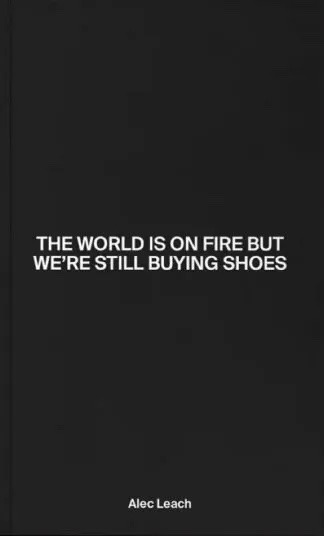


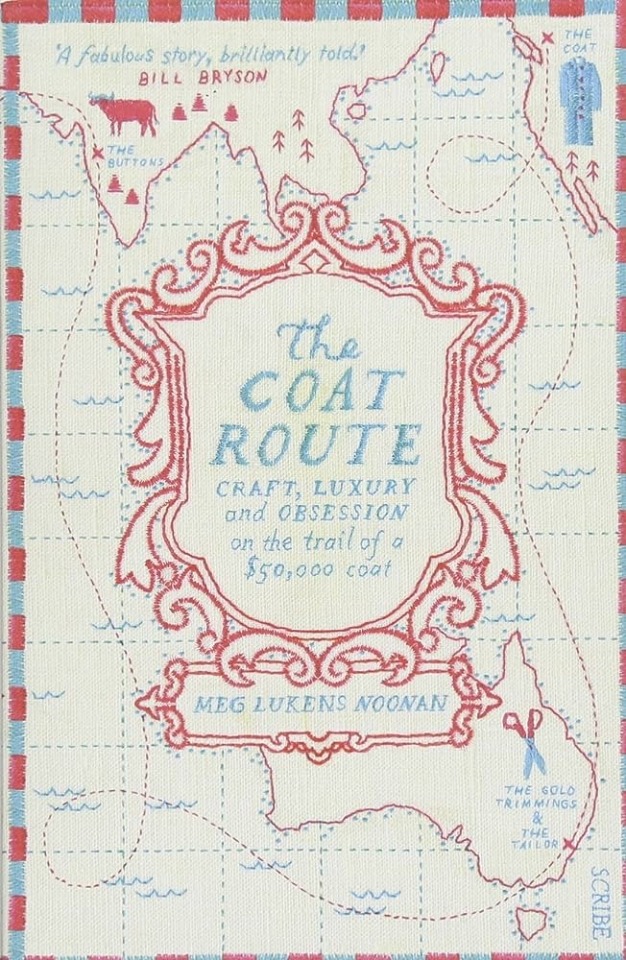

245 notes
·
View notes
Text
Recent historiography has placed particular emphasis on the social origins and influence of individuals who took opposing sides in debates on the abolition of the slave trade between 1787 and 1807. There is no doubt that family networks and connections influenced patterns of pro-slavery and abolitionist support. Despite this familial focus, comparatively little attention has been paid to the attitudes and interventions in the debate of King George III and his family. As early as 1808, Thomas Clarkson’s History of the Rise, Progress, and Accomplishment of the Abolition of the African Slave-Trade by the British Parliament recorded how Prince William Henry, duke of Clarence, and his younger cousin, Prince William Frederick, second duke of Gloucester and Edinburgh, held diametrically opposed views on the issue. Evidence that has recently come to light in the Royal Archives makes it possible to assess whether the divide between George III’s son and nephew points to a royal family riven by disagreement on the rights and wrongs of slavery. By broadening the canvas of study to include other royal dukes, this article contributes to a much fuller understanding of the family’s reaction to one of the most pressing moral and economic questions of the day. Their views were not just a matter of their own personal opinions; their interventions in debate affected (and on balance, impeded) the progress of abolition and had direct repercussions on the lives of hundreds of thousands of enslaved Africans.
#uni life#history student#to read later#king george iii#slavery#abolitionism#royal history#eighteenth century
18 notes
·
View notes
Note
This is the fic i was reading: defining love by tinkonka. have i finished it? no. apologies if it takes a weird turn. however, i present two pieces of YEHFDKSKJKLFJSDLKFS: 1. implied arospec rui and 2. the most BASED emurui takes ive seen in my whole entire life.
and for completionist's sake, here's a few more fics i have bookmarked, in no particular order!!
poor communication kills by HakaiEve: THE og aroace wxs fic. also recommend their other wxs works too because they get them. (also i think they have a tumblr with some aroace wxs art, if you haven't seen it yet!)
ikanaide by Gummysaur: maybe im just a sucker for sick fics and poetic language but. they all just care about their idiot troupe leader so much.... there's another one by them with the reverse plot of tsukasa taking care of emuruinene too that i remember relating to quite a bit!
the study of the sky, the sun, the star, and the moon by JadeMeraki: MY FAVORITE SERIES OF ALL TIME THE LANGUAGE THE HEADCANONS THE ABSOLUTELY UNFILTERED RAW TAKES i love this characterization and have accepted every word into my personal canon. i love this.
and by the same author, with hope: rui writing letters to his future self. im genuinely not ok reading this fic. the crossed out lines. the language. the despair and the hope that defines rui's core. this fic inspired me to write my own journal.
polysho nails by nonchalantatall: to be perfectly honest i do not remember this fic but 1. miracle paint reference 2. acey's favorite band reference (ajr) and 3. i must have saved it for a reason so now you will figure that out
How to Be Free by SkylerHyrule: VBS FANTASY AU (featuring the one and only tenma tsukasa and co). looooooove the way this is written and also this author understands vbs so well. really fun akian interactions too, a rarity in the field. If you like vbs i would also recommend their Misadventures of VBS's Clothes!
Infinity Spectrum by kjcoded: mizuki focused fic! the way this author describes gender stares directly into your soul and gives feelings you didn't even know you had a voice. i think about some of the lines in this daily.
Disparate Threads by MiyoatThePineapple: a little tsukasa-focused poem on creation and loving your friends a whole great deal :) (i am a sucker for poetic language)
if you're ever tired of being known for who you know (you know, you'll always know me) by dizzi_dizzy: like it says on the tin, tsukasa through ichika's eyes. it has been a while since i read it but again. bookmarked it for a reason. i think it had some great language on the passage of time?
july 27th, 2015 by anonymous: i left a comment here about dragonfly symbolism and characterization. i think that's all i need to say about it actually. yeah. loved it.
that was... a lot more than i thought i had. lol. anyways. book club!
ourgh saving all of these to my marked later thank you so much acey i will have so much to read. if i remember some bookmarked fics in particular that i really liked i will recommend them to you as well. book club!!!!!!! :3
8 notes
·
View notes
Link
47 notes
·
View notes
Note
The anon ask you got about asking for batman/DC fic recs came across my dash and so i thought i might do my civic duty be annoying offer a few ..?
There are SO many great writers and fics out there its hard to choose, but i will say:
the Cor et Cerebrum series by audreycritter is what my friends and i have taken to calling "THE Batman fic" bc its the canon of our hearts. Perfect for new&old fans of batman, well written, heartfelt, i can talk about it for hours. (Also, basically ALL of audreycritter's writing?? 🥺💖 )
Life Happens [https://archiveofourown.org/works/14779667] and the In for a Pound series [https://archiveofourown.org/series/1334581] by Cdelphiki,
Liminal Space by CalamityJim, [https://archiveofourown.org/works/19016809 ]
Year of Fallen Angels [https://archiveofourown.org/works/18407444 ] and Fussing Over Scars [ https://archiveofourown.org/works/26532511 ] by Maychorian,
Exactly how this grace thing works by irnan [ https://archiveofourown.org/works/850591] ,
Yesterdays Voices by LemonadeGarden [https://archiveofourown.org/works/11035398] also! A Good Place [ https://archiveofourown.org/works/13515501 ]
The Bonds that Tie series by DawnsEternalLight [ https://archiveofourown.org/series/659765 ]
Verdant by Cerusee [ https://archiveofourown.org/works/13477911 ]
Latchkey/Shutterbug by goldkirk [ https://archiveofourown.org/works/21672928 ]
Literally anything and everything written by Lurkinglurkerwholurks 🥰 esp The Return [ https://archiveofourown.org/works/23726839 ] (emotionally heavy but WORTH IT) and a personal fav, It Wasnt Real (but we were happy) [ https://archiveofourown.org/works/15064109 ]
Multiple one shots by: incogneat_oh, CrimeAlley1048, Lysical, starknjarvis,,,,,
I know im missing some but like i said, there are so many incredible batfic authors and my heart is filled to bursting with love for them 🥺💖💞
BATFIC RECOMMENDATIONS!!! ❤️🔥❤️🔥❤️🔥
Thankk you for all the fic recs <3
267 notes
·
View notes
Note
your trademark has gotta be the deranged rants passionate essays that you make when your adhd flares up
I'd LOVE to object this, HOWEVER I have no idea which rants/essays are you talking about hahshasha. I don't remember
Well, I made a pair of them for some shit ass series but I really cannot recall any other hashahsah
7 notes
·
View notes
Text
Fear is the mind killer and employment is the fear killer. Gettin hit w the I Will Call You Tomorrow by an employer hit better than
benzos
11 notes
·
View notes
Text
Three reads for those looking for their next literary fix
I'm an avid reader and love to expand my taste with different genres. However, I've been struggling to find a book that really catches me. My name is Insert Blair, and I wanted to share some books of varying genres, all of which were so good that I couldn't put them down. Hopefully, you'll love them as much as I did.

“Homesick for another world” by Ottesa Moshfeg
I consider myself one of Moshfeg’s number-one fans. I finished her masterpiece, “My Year of Rest and Relaxation” on New Year's Eve, and was compelled by her writing style. I made it a mission to always buy one of her books when I could with this being the second one I bought. “Homesick for another world” Is a collection of stories, each new chapter detailing a new somebody's day-to-day life. While this would usually be a mundane concept, Moshfeg’s writing style makes it shocking and grotesque in the best way possible. This novel made me both giggling and drop my jaw on the ground. There were even points where I would take a picture of where I was to show my friends so they could share my delight. For example, here is a quote from the first chapter where a student is explaining how getting ejaculated inside of makes you fat, “Wrong, Miss Mooney. The stuff makes you thick in the middle. That's why girls get so thick in the middle. They’re sluts.” I think you can understand what I mean. I cannot recommend this and Moshfeg’s other works enough.
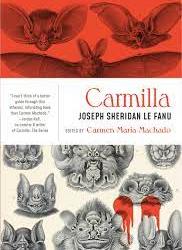
“Carmilla” by Joseph Sheridan Lefanu
I have to admit that I found this book off of TikTok, but I still don’t see it being talked about nearly enough. “Carmilla” Is a gothic novella about a family dealing with suspiciously vampire-flavored problems. This book predates “Dracula” by Bram Stoker, making it one of the first vampire books ever, and it is also riddled with strong sapphic undertones that give it a unique personality. While the book is short and easy to read, the overall aesthetic and writing style will catch your attention. And is sure to keep you yearning for more at the end. The length also makes it a great quick read, perfect for anyone who may not have time to sit down and read a five-hundred page book. The sapphic undertones may also be perfect for those looking for some lgbtq+ representation mixed in with a cool vampiric conflict.

“Witches” by Daisuke Igarashi
I finished “Witches” midway through a stressful school year, yet I still found the time to finish it, often skipping lunch to read it in my favorite teacher's class. It differs from the other two recommendations in that it’s a manga, and before you run away screaming from the idea of reading right to left instead of the normal way I ask that you give this manga a chance. Like “Homesick for another world” This manga is a collection of short stories depicting stories of witches throughout the ages. All of the stories are captivating and magical, and the artwork is offensively beuatiful. It's like if a mad scientist fused together a magical girl manga with something written by Junji Ito. Out of all the recommendations this is definitely the one I recommend the most.
Those were my three recommendations and I hope you find one of them interesting. Thank you for reading! :)
#reading#literature#booklover#book blog#to read#reading list#to read later#personal blog#book review#manga#ottesa moshfegh#carmilla#please read#bookshelf#book recommendations#downtown girl#blog#books and reading#booklr#bookworm#currently reading#book quotes#today on tumblr
9 notes
·
View notes
Text
Andrew Lownie recounts how he became the victim of state surveillance as a result of his successful efforts to secure the release of the personal diaries and letters of Dickie and Edwina Mountbatten – bought by the University of Southampton with public funds to be open to researchers – in what became the largest-ever release of material under Freedom of Information (FOI), 33,000 pages, but which personally cost him over £400,000 in legal fees. Drawing on his own research experiences, he also describes the failure of government departments to deposit records at the National Archives as required by statute, the techniques public authorities use to frustrate FOI requests and suggests how FOI could be improved. All of this curation, he argues, leads to a distortion of the historical record and the censoring of our history.
3 notes
·
View notes
Text
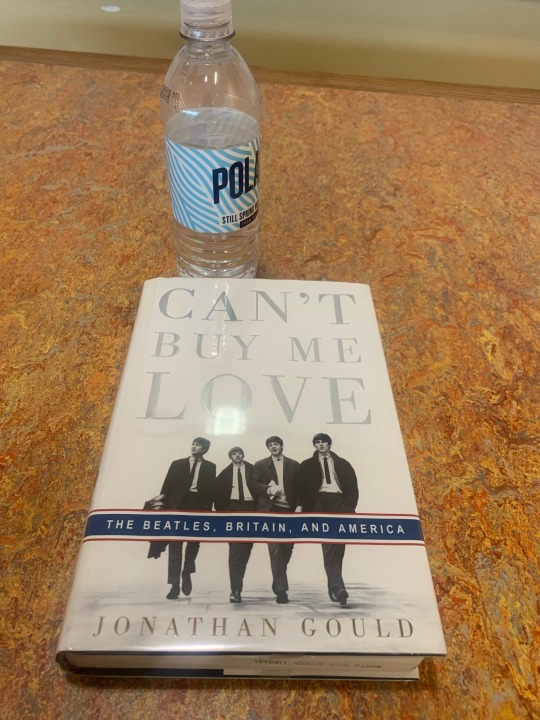
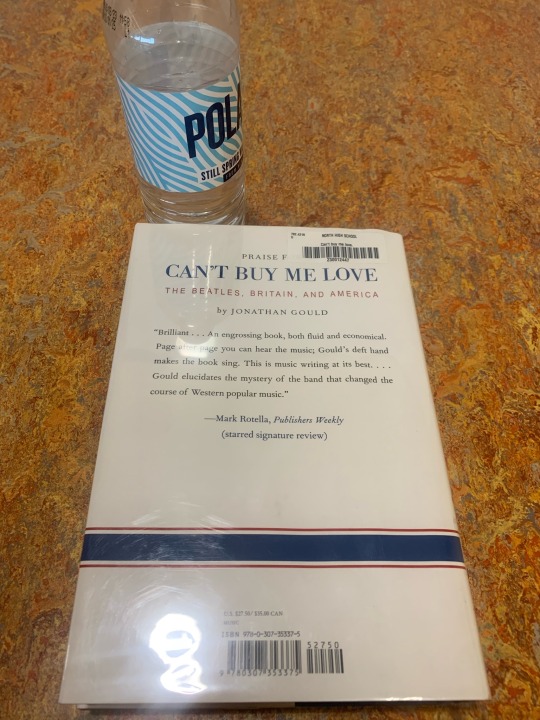




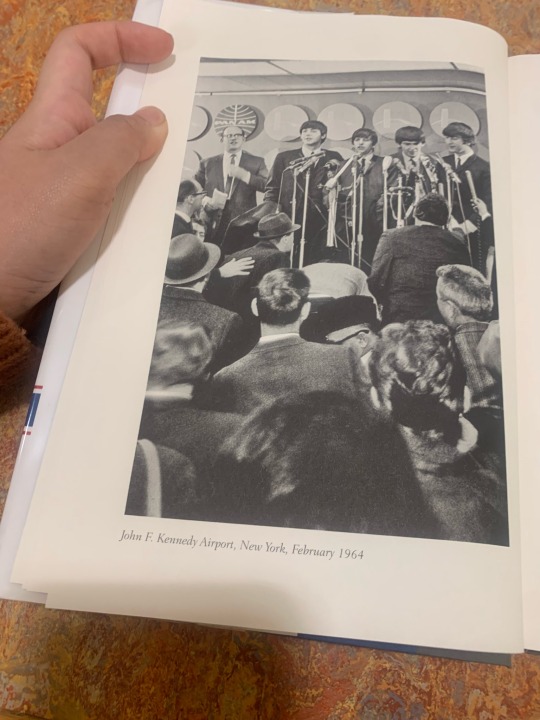
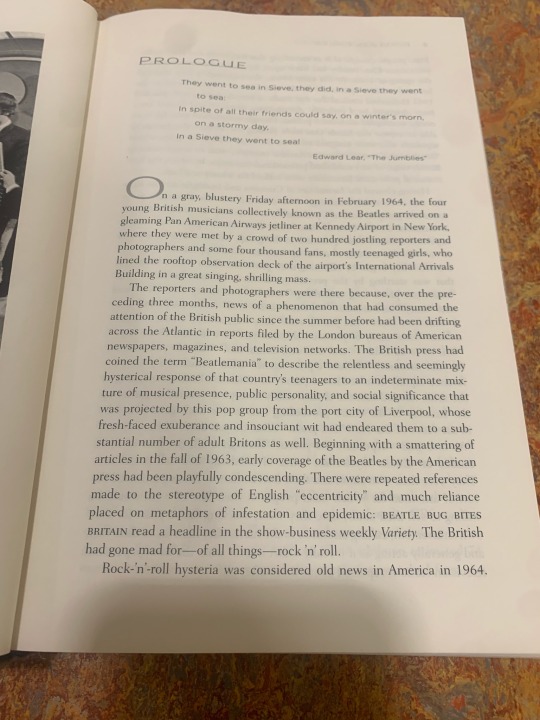


Can someone tell me if screenshotting books is illegal, thanks.
Transcript:
"Brilliant . . . An engrossing book, both fluid and economical.
Page after page you can hear the music; Gould's deft hand makes the book sing. This is music writing at its best. ..
Gould elucidates the mystery of the band that changed the course of Western popular music."
NEARLY TWENTY YEARS IN THE MAKING, Can't Buy Me Love is a masterful work of group biography, cultural history, and musical criticism. That the Beatles were an unprecedented phenomenon is a given. In Can't Buy Me Love, Jonathan Gould seeks to explain why, placing the Fab Four in the broad and tumultuous panorama of their time and place, rooting their story in the social context that girded both their rise and their demise.
Beginning with their adolescence in Liverpool, Gould describes the seminal influences from Elvis Presley and Chuck Berry to The Goon Show and Alice's Adventures in Wonderland that shaped the Beatles both as individuals and as a group. In addition to chronicling their growth as singers, songwriters, and instrumentalists, he highlights the advances in recording technology that made their sound both possible and unique, as well as the developments in television and radio that lent an explosive force to their popular suc-cess. With a musician's ear, Gould sensitively evokes the timeless appeal of the Lennon-McCartney collaboration and their emergence as one of the most creative and significant songwriting teams in history. And he sheds new light on the significance of Sgt. Pepper's Lonely Hearts Club Band as rock's first concept album, down to its memorable cover art.
Behind the scenes Gould explores the pivotal roles played by manager Brian Epstein and producer George Martin, credits the influence on the Beatles’ music of contemporaries like Bob Dylan, Brian Wilson, and Ravi Shankar, and traces the gradual escalation of the fractious internal rivalries that led to the group's breakup after their final masterpiece, Abbey Road. Most significantly, by chronicling their revolutionary impact on popular culture during the 1960s, Can't Buy Me Love illuminates the Beatle g charismatic phenomenon of international proportions, whose anarchic energy and unexpected import was derived from the historic shifts in fortune that transformed the relationship between Britain and America in the decades after World War II.
From the Beats in America and the Angry Young Men in England to the shadow of the Profumo Affair and JFK's assassination, Gould captures the pulse of a time that made the Beatles possible and even necessary. As seen through the prism of the Beatles and their music, an entire generation's experience comes astonishingly to life. Beautifully writ-ten, consistently insightful, and utterly original, Can't Buy Me Love is a landmark work about the Beatles, Britain, and America.
PROLOGUE
They went to sea in Sieve, they did, in a Sieve they went to sea:
In spite of all their friends could say, on a winter's morn.
on a stormy day.
In a Sieve they went to sea!
Edward Lear, "The Jumblies"
On a gray, blustery Friday afternoon in February 1964, the four young British musicians collectively known as the Beatles arrived on a gleaming Pan American Airways jetliner at Kennedy Airport in New York, where they were met by a crowd of two hundred jostling reporters and photographers and some four thousand fans, mostly teenaged girls, who lined the rooftop observation deck of the airport's International Arrivals Building in a great singing, shrilling mass.
The reporters and photographers were there because, over the preceding three months, news of a phenomenon that had consumed the attention of the British public since the summer before had been drifting across the Atlantic in reports filed by the London bureaus of American newspapers, magazines, and television networks. The British press had coined the term "Beatlemania" to describe the relentless and seemingly hysterical response of that country's teenagers to an indeterminate mixture of musical presence, public personality, and social significance that was projected by this pop group from the port city of Liverpool, whose fresh-faced exuberance and insouciant wit had endeared them to a substantial number of adult Britons as well. Beginning with a smattering of articles in the fall of 1963, early coverage of the Beatles by the American press had been playfully condescending. There were repeated references made to the stereotype of English "eccentricity" and much reliance placed on metaphors of infestation and epidemic: BEATLE BUG BITES BRITAIN read a headline in the show business weekly Variety. The British had gone mad for--of all things-rock'n' roll.
Rock-n'-roll hysteria was considered old news in America in 1964.
Most people thought of it as something that had come and gone in the years since Elvis Presley had burst upon the national consciousness in the spring of 1956. By the early 1960s, the pop-singing teen idol hag become a cliche epitomized by the character of Conrad Birdie in the 1963 Hollywood musical Bye Bye Birdie: a loutish, leering naif, plucked from obscurity briascunically manipulative manager and foisted on needy, worshipful adolescent public. Though nobody had thus far been able to expose the hands that were pulling the strings, the American reporters who were assigned to cover the story took it for granted than “Beatlemania” were noter spectacular example, with an unaccountably British twist, of an established promotional technique by which the hormones of pubescent femininity were milked for money and fame.
Having cleared the formalities of Customs and Immigration, the Beatles and their small entourage were escorted into the terminal's press room and grouped around a podium for an impromptu news conference, Uninitiated as to which of these slim, dark-suited figures was which, reporters directed their questions at the group, whose members seemed to vie with one another to come up with the most flippant or outrageous answer. They began by affirming their professionalism with a bluntness that was startling by the prevailing standards of show-business cant.
“Won't you please sing something?" asked a woman reporter. "No!" said one. "Sorry!" said another. "We need money first!" said a third. And away it went from there: "Are you for real?" they were asked. "Come and have a feel."
"How many of you are bald, that you have to wear those wigs?"
"Oh, we're all bald ... and deaf and dumb, too." "How do you account for your success?" "We have a press agent." What started as a press conference rapidly devolved into a parody in which the Beatles, speaking in the droll, hooded accents of their native Liverpool, seemed to gather up the banality of the entire proceeding and toss it back good-naturedly in the faces of the New York press. "What do you think of Beethoven?" "We love him-especially the poems." Through it all, the four of them exuded an almost mysterious sense of solidarity and self-possession. They were their own show, and their own audience. Having attracted the sort of attention for which most people in their line of work would be willing to sell their souls, here they were, cracking dumb jokes for their own amusement, calling attention to the mercenary motives of their visit, and generally acting as if it really didn't matter what the newspapers and television stations reported about them after all.
And what of the thousands of fans who squealed on the roof and raced down the corridors and pressed like love-starved orphans against the doors of the room where this curious rite of transatlantic passage was taking place? By and large, their motivations were more complex, and their intentions more honorable, than those of the New York press. They were there because, for the past month, they had been listening to an incessant crescendo of Beatles songs on the radio and buying unprecedented numbers of Beatles records as fast as the group's American label, Capitol Records, could press them and ship them to stores. On the basis of what they had heard in the tough, bluesy rhythms and tender pop melodies of those songs, they were in thrall to a form of passionate enthusiasm that was, for most of them, unlike anything they had ever experienced before.
In a uniquely American gesture of hospitality, the four Beatles were then individually placed into four black Cadillac limousines and driven into midtown Manhattan. As they rode into the city, they listened with amazement to the sound of their own songs blaring forth wherever they turned on the radio dial, interspersed with the disc jockeys' simultaneous accounts of their trip into the city and their approach to the Plaza Hotel on Central Park South.
The Beatles spent their first weekend in New York holed up behind the imposing faux-Renaissance façade of the Plaza, insulated by a thickening blanket of police, press, and fans. "I don't want to talk to them. I just want to stand here and get images," announced a reporter from The Saturday Evening Post. "I don't want to interview them. I just want their autograph for my managing editor," echoed his colleague from Life. In the public square that adjoined the hotel, a crowd of several hundred teenagers maintained a constant vigil, their eyes riveted on the entrance to the Plaza, their backs pressed against the stonework of the Pulitzer Fountain, a gift to the city from the famous newspaper publisher, its granite basins topped by the statue of Pomona, the Roman goddess of abundance. Periodically the Beatles would reward the attention of these sentries by emerging from the hotel on one pretext or another--a photogenic stroll by the boathouse in Central Park, a visit to local night spots like the nearby Playboy Club, a television rehearsal at the CBS studios on Broadway at 53rd Street. Then, on Sunday evening, February 9, the group performed live on The Ed Sullivan Show, while an estimated 74 million Americans, or 34 percent of the population, watched from the comfort of their homes. According to the Nielsen rating service, this was the largest audience that had ever been recorded for an American television program. Included in the total was an extremely high percentage of the country's 22 million teenagers.
Looking like the world's most nervous substitute teacher as he faced a studio audience of 1,500 fans, the dour, square-shouldered Sullivan-man renowned for the awkwardness of his stage presence-introduced the Beatles at the top of the show. Their appearance was greeted by a sustained screech from the audience that one New York television critic likened to the sound of a subway train rounding a curve in the track.
The Beatles went on to perform three songs. Two of these, "All My Loving" and "Till There Was You," were drawn from an album called Meet the Beatles, which had sold two million copies in the three weeks since its release. The third song, "She Loves You," had been issued as a single in the United States the previous summer and had sold negligibly at the time. That record now stood at number three on the American charts, two positions behind the Beatles' most recent single, "I Want to Hold Your Hand."
By the time of this performance, most of the material on the two albums and five singles the Beatles had released in Britain over the preceding year was familiar to their American fans. The saturational press coverage had helped to familiarize most teenage viewers with the faces and emblematic personality traits of the individual Beatles as well. (For many adult Americans, by contrast, it would take years to learn to tell them apart). What came as a complete revelation to the budding Beatle-maniacs who first saw them on The Ed Sullivan Show was just that: the sight of the group onstage. For the Beatles looked and acted like no performers they had ever seen. The four of them were dressed identically in dark suits, white shirts, and knit ties, the conventionality of which was subverted by the tight fit of their jackets and trousers and the sleek, almost reptilian line of their pointy-toed, Cuban-heeled boots. The band's defining physical feature, however, was the helmetlike profusion of hair that shook and bounced around their faces as they sang, longer and fuller than the hair on any males these kids had ever seen outside of storybook illustrations of the Middle Ages. In addition to the novelty of their physical appearance, another notable feature of the Beatles' performance involved the absence of any obvious leader or focal point. All three of the guitarists not only played but sang, while the two on either side, their guitar necks pointing in opposite directions, shared the lead vocals on the songs. The television cameras reflected this egalitarian arrangement by dividing their attention between shots of the group, shots of its individual members, and shots of the fans in the audience-shriek-ing, shouting, waving their arms, and careening in their seats. At the end of each number, the Beatles acknowledged the bedlam in the studio by performing a courtly, well-synchronized bow. The final chord of "She Loves You" was followed by the reappearance of a relieved-looking Ed Sullivan, who read a brief benedictory telegram from Elvis Presley before inviting his viewers to partake of "a word from Anacin."
The supporting acts on the program that night included the juvenile cast of Oliver!, a hit Broadway musical based on the story of Oliver Twist, and an impressionist named Frank Gorshin, whose routine was based on the then-ludicrous concept of Hollywood stars running for political office. Near the end of the hour-long show, the Beatles returned for two more numbers, "I Saw Her Standing There" and "I Want to Hold Your Hand," the two sides of their current number-one single. The girls in the audience now rewarded themselves for forty minutes of good behavior by completely cutting loose.
The press coverage redoubled on the morning after the broadcast with reviews in all the New York papers and a formal news conference at the Plaza that was likened by Variety to a White House briefing. (Capitol Records later claimed that its nationwide clipping service had collected 13,882 newspaper and magazine articles about the Beatles by the end of their two-week stay.) "How did you propose to your wife?" a reporter asked John Lennon, the acknowledged wit of the group, whose wife Cynthia had accompanied him to New York. "The same as anyone else," said Lennon, clearly irritated by the question. "I want to do it right," the reporter insisted. "You want to do it right?" Lennon responded coldly.
"Then do it with both hands." Asked if they had found "a leading lady" for their upcoming film, the Beatle named George Harrison replied, "We're trying to get the Queen. She sells." "Obviously, these kids don't give a fig about projecting any sort of proper image," a reporter was heard to say.
On Tuesday a snowstorm forced the Beatles to travel by train to Washington, where they were scheduled to play their first live concert in America and attend a reception in their honor at the British embassy.
The concert was held at a sports arena whose centrally located stage required the Beatles to pause after every few songs to physically reorient themselves and their equipment toward another quadrant of the eigh, themschis reaming participants. The embassy reception was attender shousand r the Washington diplomatic corps and marred by an incident by much a scissors-wielding guest and the hair of Ringo Starr. After involving a fastered apology from the wife of the British ambassador, Ringo turned to her hushand and asked, "And what do you do?"
The following day the group returned to New York to play two concerts at Carnegie Hall, where they paid their respects to America's great Serine of classical music by opening their set with Chuck Berry's "Rot Siti Becthoven" to the delight of two thousand fans and those members Wow Yorks political, social, and cultural establishment who had the clout to demand and receive tickets. (I loved it. They were marvelous," said Mrs. Nelson Rockefeller, wife of the governor.)
Next the Beatles flew to Miami Beach, where on Sunday, live from the Napoleon Ballroom of the Deauville Hotel, they performed before another 70 million viewers on The Ed Sullivan Show. (This time Sullivan introduced them as "four of the nicest youngsters we've ever had on the show." Then, after several days of exceedingly well -reported relaxation in the Florida sun, the Beatles flew back to Britain. On American news-stands, their faces filled the covers of Life, Look, and The Saturday Evening Post. On the American record charts, their music occupied the first and second positions for both singles and albums. (The trade journal Billboard later estimated that the Beatles accounted for 60 percent of all the singles sold in the United States during the first three months of 1964.) At London's Heathrow Airport, a crowd of ten thousand British patriots turned out at seven o'clock in the morning to afford their heroes the sort of welcome that General Gordon might have received if Gordon had returned from Khartoum.
FOR ALL THAT came after, the events of February 1964 remain to this day the best-known chapter of their well known story: the Beatles' "conquest" of America, a moment worthy of mention in the most cursory chronicle of the 1960s, preserved for posterity in a set of iconic photographs and grainy black-and-white video images whose familiarity has served, over time, to obscure the sheer strangeness of it all. Until this point, the influence of American and European models on their music and fashion sense notwithstanding, the Beatles' lives and their popular phenomenon had been bordered by the bounds of a British world. The outbreak of Beatlemania in Britain had marked the culmination of nearly seven years of self-improvement and self-promotion on their part, in a career that had progressed through distinct stages of success at the local, regional, and national level. Now this same crazed enthusiasm had leaped the borders of Britain to arrive in New York City, the world capital of mass culture and communications, where a state of full-blown pop hysteria had been achieved in five weeks' time, with most of it occurring before the group had set foot on American soil. In Britain the popularity of the Beatles was widely understood to be an expression of social and cultural forces that had been in motion for many years. In America, like princes in a fairy tale, they seemed to awaken some great, slumbering need.
Though the Beatles seemed utterly new to the millions of young people who first saw them perform on The Ed Sullivan Show in February 1964, two generations of American adolescents had already bestowed a similar form of frenzied adulation on musical heroes of their own, Frank Sinatra and Elvis Presley. At the first opportunity, both Sinatra and Presley had managed to parlay their initial success as teen idols into extraordinarily lucrative but otherwise conventional show-business careers.
After weathering a celebrated "downfall" in the late 1940s, Sinatra went on to establish himself as the preeminent all-around entertainer of his generation: a best-selling recording artist, a major Hollywood movie star, a top-drawing Las Vegas headliner, and a paragon of middle-aged cool.
(All told, in a career lasting half a century, he released more than seventy albums and starred in more than fifty films.) On a less artistically acclaimed level, Elvis Presley also assimilated eagerly into the world of conventional show business, making his mark as the best-paid B-movie star in the annals of Hollywood. Earning more than a million dollars a picture, Presley from 1960 onward settled into a numbingly remunerative routine that yielded two or three feature films and two or three best-selling soundtrack albums in every fiscal year. Though he, too, would experience a modest downfall and comeback during the second half of the 1960s, by the time of his death in 1977 he had recorded more than forty albums, released nearly a hundred hit singles, and starred in fifteen films.
With the Beatles, there would be no downfalls or comebacks, no scores of singles and albums, no headlining appearances in Las Vegas, no catalog of Hollywood films. With the Beatles, there would be nothing cataloguld properly be described as a "show business career" at all. While that count of their commercial success, artistic influence, and enduring popularity would qualify them as one of the greatest phenomena in the history of mass entertainment, by their own insistence they never consid. oned themselves to be "entertainers" in the accepted sense of the word.
Instend, February 1964 marked not only the climax of a pop craze, but also the beginning of a remarkable metamorphosis.
Over the next six years, drawing on untold reserves of creativity and ambition, the Beatles would play a leading role in revolutionizing the way that popular records were made, the way that popular records were lis. tened to, the nature of popular songwriting, and the role that popular music itself would play in people's lives. They would preside over the transforma-Lion of the music business into the record business, and over the expansion of that business into a branch of the entertainment industry whose international sales and scope would come to rival those of Hollywood.
At the same time, from its frenzied, inchoate beginnings in Britain and the United States, the great upsurge of adolescent fervor that the press called Beatlemania would coalesce into one of the main tributaries of a broad confluence of pop enthusiasm, student activism, and mass bohemianism that would flood the political, social, and cultural landscape of much of the industrialized world during the second half of the 1960s, spinning off whorls and eddies- the women's movement, the gay liberation movement, the environmental movement -in its wake. In a manner that was inconceivable prior to an era when pop stars, film stars, and sports stars began to achieve the sort of fame and exert the sort of influence that had once been reserved for political, military, and religious leaders, the Beatles would serve as prominent symbols, spokesmen, or, as some would have it, avatars of this great international upheaval. Bridging nationalities, classes, and cultures, they became the common property of a generation of young people who idealized them, and then identified powerfully with that idealization of them- -even as the Beatles them-selves, in their music and their public lives, struggled to deflate those idealizations in an effort to retain their own grip on reality. Through it all, they would demonstrate an uncanny ability to be all things to all people while remaining true to themselves.
Nor would their influence wane. For a few years after the Beatles disbanded in 1970, pop critics tended to downplay their importance and compare their music unfavorably with the ruder styles of rock exemplified by their old rivals, the Rolling Stones. But throughout the 1970s, as each of the former Beatles released solo recordings of his own, a flame of hopeful speculation flickered around the possibility that the four of them would one day reunite and reassert the cultural power they had once wielded with such authority, humor, and grace. John Lennon's murder in 1980 put an end to that hope. (It also turned Lennon into an awkwardly sainted figure: an apostle of Peace and Love who bore little resemblance to the sardonic and mercurial Beatle the world had known.)
Still, in the aftermath of that senseless tragedy, with all prospect of a triumphant reunion gone, the Beatles continued to sell vast numbers of their recordings more than a billion at last count. In 2001, thirty years after their demise, a CD reissue of their hit singles sold an unprecedented 13 million copies in the first month of its release. Year after year, decade after decade, young listeners have continued to experience their own personal version of the sense of revelation that first gripped a generation of British and American adolescents in the fall of 1963 and the winter of 1964, while millions of older listeners have continued to experience the Beatles' music as an enriching and benevolent force in their lives. To this day they are widely regarded as the greatest concentration of singing, songwriting, and all-round musical talent that the rock-n'-roll era has produced.
In February 1964, of course, all of this lay in the future. But, from the beginning, there were several attributes that distinguished the Beatles from anything that had happened in popular music before. The first of these was their nationality. Since the term was first coined in the 1920s, the very concept of a superstar had become synonymous with the burgeoning celebrity entertainment culture of the United States, which had colonized the world with its mythos of Broadway, Tin Pan Alley, and Hol-lywood. The Beatles in 1964 were the first unmistakably non- American performers in any mass medium to achieve the status of superstars on an international scale (unlike, say, Charlie Chaplin, who had lived in Hollywood and played a seminally American character on the screen). As the spearhead of a "British Invasion" of the American music scene, the Beatles posed an unprecedented challenge to the hegemony that America had exerted over the world of popular music (and popular entertainment in general) since the syncopated rhythms of ragtime first captured the fancy of Europe on the eve of World War I.
In mounting this challenge to America's domination of the pop world, the Beatles also succeeded in defying all the prevailing stereotypes of what it meant to be British in 1964-stereotypes that, until the recent dissolution of Britain's far-flung empire, had exerted not only influence but a direct form of political and cultural authority over a quarter of the earth's population. "From the start, the very cut of their limbs, the very glint in their eyes, showed that they were ironically detached from the grandeur of the British past," noted the writer Jan Morris at the time.
Youthfulness, stylishness, unpretentiousness, and nonchalance--these were not the qualities the world had come to expect from the familiar and once-intimidating spectacle of Englishmen abroad. Yet by drawing on their origins in the Lancashire seaport of Liverpool, whose polyglot population of ethnic and religious minorities made it the least homoge-neously "English" city in all of England, the Beatles personified an iconoclastic version of their national character that proved to be as compelling to the youth of North America, Europe, Australia, and parts of Asia as it was to their British fans.
Another attribute that distinguished the Beatles from the beginning was their identity as a group: the first such group in the history of mass entertainment to elicit the sort of romantic fascination and identification that defined the power of a star. Like the edge of defiance that Sinatra and Presley brought to their careers, the sense of unity and camaraderie the Beatles projected was rooted in their social origins, and it added an explicitly social dimension to their appeal. Teenagers in particular recognized that, whatever the nature of their professional association, these four young men were indeed a group of friends who had grown up in the same place, shared many of the same experiences, and owed one another the same unspoken loyalty that had bound young men together in groups since time began. From the outset, there was something atavistic about the Beatles' group identity. The most obvious expression of this (apart from their punningly totemic name) was their uniform yet idiosyncratic appearance: the matching clothes and hair that tied them to one another and set them apart from everyone else. Yet the most potent expression of the Beatles' collective nature was ultimately to be found in their music.
For, unlike the vast majority of popular recording artists in 1964, the Beatles were not only singers (three of whom sang lead) but collaborative composers and ensemble instrumentalists who wrote their own material and provided their own accompaniment. This was something very differ ent from the nondescript "vocal groups" and hierarchical "harmony groups" that popular music had known. The Beatles were a vision of self-sufficiency, interdependence, and shared ambition that supplied popular music with the archetype of a "rock group," a model of musical organization that would endure for decades to come.
AS THE FOCUS of so much interest and appreciation over the last forty years, the Beatles have come to represent a bibliographical phenomenon as well as a musical one. The first real book about them, Michael Braun's astute account of Beatlemania titled Love Me Do, appeared in 1964.
Since then they have served as the subject of more than five hundred books, running the full gamut of the publishing arts. These include a glut of memoirs by friends, family, and professional associates; multiple biographies of the individual Beatles; transcriptions of their interviews and treasuries of their quotations; anthologies of newspaper and magazine articles; photograph albums by the dozen; diaries of their day-to-day activities; chronicles of their individual recording sessions, concert tours, and even vacation trips; collections and concordances of their song lyrics; volumes of critical commentary and formal musicological analysis; and scrupulously notated scores of their recorded arrangements. There are Beatle encyclopedias, dictionaries, discographies, and at least two book-length bibliographies devoted to making sense of all the other writing about them. This output is all the more remarkable considering that, prior to the Beatles, not a single significant book had been written on the subject of rock 'n' roll.
Given this great effusion of words, it is interesting to note how few full-scale biographies of the Beatles as a group have been published over the years. The first such effort, written at the peak of their popularity in 1968 by the British journalist Hunter Davies, was an "authorized" biography that enjoyed the cooperation of the Beatles, their families, and their manager, Brian Epstein. The virtues of Davies's book included its unassuming style and its unequaled access to the group. As a biography, its main deficiency was that it ended before the Beatles did, leaving the final years of their association undocumented. Davies's work was also slightly compromised by his need to obtain the Beatles' approval of its contents, which led him to avoid or expunge a certain amount of material that was deemed objectionable. These omissions were amply redressed by the next major biography, Philip Norman's Shout, which was published in 1981, one year after John Lennon's death. A former colleague of Hunter Davies's at the London Sunday Times, Norman filled out the story admirably and carried it through to its end. The tone of his writing was by turns more elegiac and jaded than Davies's, but his approach was essentially the same. Both books relied heavily on extensive (and exclusive) interviews--in Davies's case, with the Beatles and their intimates; in Norman's case, with nearly everyone but the Beatles and their intimates.
More recentlv, in 2005, the American journalist Bob Spitz published a compendious biography of the group that revisited many of Norman's sources (who spoke with both the benefit and detriment of hindsight) and further enlarged the picture by drawing on the huge body of published interviews, memoirs, and more-specialized historical sources that has accumulated over the years. All three of these books have reflected the ethos of feature journalism in seeking to penetrate the public image of these very public figures in an effort to reveal the "inside story" of their lives. Among other things, this meant that Davies, Norman, and Spitz devoted comparatively little attention to the Beatles' music; their records, after all, were known to everyone.
Over the last twenty-five ears the vast bulk of the biographical writing about the Beatles has focused on the individual members of the group and on specialized aspects of their career. To some extent, this tendency toward individualization and specialization has reflected the way the Beatles' collective identity has made them resistant to the standard biographical treatment. Most biographies tell the story of a person's life from beginning to end. A biography of the Beatles, by contrast, is neither the story of a full life nor the story of a person. It is rather the story of a group of young men whose affiliation began in adolescence and effectively ended before any of them had reached the age of thirty. It is a story that defies individualization and, as a result, places more importance on the qualities the four of them shared than on the qualities that made them distinct.
This is a book about the Beatles, Britain, and America in the twenty-five years after World War II. It is drawn from widely diverse sources of information and imagination, and it seeks to combine three main per-spectives-the biographical, the musical, and the historical -in an effort to convey the full import and interplay of the Beatles' lives, art, and times.
The first strand of the story—the biographical—comprises the narrative of their career, beginning with their individual childhoods and their collective adolescence in postwar Liverpool, and ending with their breakup in 1970. It is, by any measure, a remarkable success story, which has been told and retold so often that it has come to resemble a modern folktale. Like a folktale, it has been put to many different uses by its many different narrators. The goal in recounting it here again is to do so as vividly and accurately as possible, clearing away the ephemeral, the apocryphal, and the merelv anecdotal in order to focus on what can truly be known about the lives of four people whose overnight success caused them to pass from obscurity to ubiquity with little transition in between. Here especially, this book benefits from the tremendous amount of material about the Beatles that has been published over the last twenty years. That a great deal of this information is contradictory, implausible, or, in some cases, simply incredible has required that none of it be taken at face value; instead, every assertion has been assessed for its plausibility and its concurrence with other accounts. Particular attention has been paid to the reliability of sources, since the many retellings of the Beatles' story do not lack for unreliable, self-serving, or reflexively revisionist narrators. In keeping with the conventional wisdom of writing about the past, greater weight has been given to primary sources and contemporary accounts than to memoirs and recollections--including those of the Beatles themselves. (As Paul McCartney once remarked, "I keep seeing pictures of myself shaking hands with Mitzi Gaynor [a minor celebrity of the time] and I think, 'I didn't know I met her. It's that vague.")
The second strand of the story centers on the Beatles music. This is an account of their early musical awakenings, idols, and influences, their apprenticeship as singers and accompanists in the clubs of Liverpool and Hamburg, their precocious flowering as songwriters, and their extraordinarily rapid and dynamic evolution as recording artists from 1963 onward. From the Beatles' perspective, this is closest thing to the "inside story" of their lives. For while their fans, the press, and the public may often have wanted to see them as something else or something more, it was always as musicians that the Beatles saw themselves. Music was the passion that linked them to one another and brought them to the attention of the world, and from 1960 to 1970, more than any other activity, music was what they did. This strand of the story also involves the many ways that millions of listeners, including fans, critics, and fellow artists, responded to the Beatles' musie: what people experienced at their live performances and heard in the songs on their records, and how it was her they related this music to their own lives. An added virtue of putting the Beatles music at the center of their story is that the relevant mater. his the eleven albums and twenty-three singles they recorded between 1962 and 1969, containing their definitive performances of 182 original songs- are so readily available to listeners and readers, sounding just as they did at the time.
The third and broadest perspective of this book focuses on what might be termed "the real outside story." This comprises the social and cultural background, the conditions and developments that shaped the lives of the Beatles and determined the part they played in the history of their times. The years of their story coincided with a period of rampant social and cultural change in Britain and America, and throughout the industrialized world. In Britain this transformation began with the election in 1945 of a Labour government committed to dismantling the British Empire, reforming the British class system, and providing for the health and education of the populace through the creation of a socialist "welfare state." It continued during the 1950s with the efforts of Conservative governments to promote the growth of an American-style consumer economy stimulated by the enticements of an American-style consumer culture; and it culminated during the 1960s with the emergence of London as a world capital of pop culture, ruled by an unruly elite of former "war babies" who were bent on taking their country's new climate of expressive freedom to once unimaginable extremes. The Beatles began as creatures of this new social and cultural milieu; they wound up serving as the most prominent symbols of it for people all over the world.
The years of their story also coincided with a technological revolution, paced by advances in the field of electronics, that would transform the nature of everyday life during the second half of the twentieth century as dramatically as the utilization of electricity had transformed the nature of life during the first half of the century. To cite some obvious examples: the passenger jets on which the Beatles traveled to America, the long-playing records they sold in such profusion, and television shows like the one that allowed 74 million people to view them simultaneously from the comfort of their homes-all were freshly minted products of the postwar world. Tape recording, FM radio, and electrified musical instruments-these, too, were recent innovations whose creative potential remained largely unexplored. To a considerable extent, the Beatles' ability to exert a new form of cultural power would turn on their ability to capitalize on these new technologies, and on the consolidation of these new technologies into a new kind of parallel universe, combining information, enter-tainment, and commercial advertising, that ordinary people first began referring to during the early 1960s as "the media."
Finally, the years of the Beatles' story coincided with the historic shift in Anglo-American relations precipitated by World War II, when the leading imperialist nation of the nineteenth century conclusively yielded its power and influence to the leading internationalist nation of the twentieth century. In 1939, Britain still ruled over the greatest sovereign empire the world had ever known, and the British people retained a sense of their country (whatever else they may have thought about it) as the most powerful nation on earth. In 1939 the United States remained a country still preoccupied with its own internal development and its recent efforts to recover from the disastrous social and economic consequences of the Great Depression. Within ten years everything had changed. Now Britain its cities scarred, its wealth depleted, and its vitality sapped by the war was turning its gaze inward as it abdicated its status as a Great Power, while the United States, its economy booming, its confidence bursting, had triumphantly assumed the mantle of world leadership.
This historic reversal of fortune transformed not only the political relationship between the two great English-speaking nations, but the unique cultural relationship between them as well. Throughout the first half of the twentieth century, unimpeded by the need for translation, the dynamic and democratic sensibility of American popular culture had exerted a powerful influence on the imaginative lives of the British peo-ple, with American styles and American products dominating the British market for music and films. The Beatles themselves were a product of this influence, which intensified sharply in the years after World War II.
But the democratization of postwar British society had given rise to a new generation of young people who were no longer content merely to watch and listen, and were now prepared to participate in this popular culture on their own terms. Just as Britain had once bequeathed one of the world's great literary traditions to America, where it became infused with the native genius of writers like Poe and Wharton and Twain, America was now bequeathing one of the world's great musical traditions to Britain, where a tight little band of young Liverpudlians stood ready to infuse that tradition with a native genius of their own.
5 notes
·
View notes
Text

The Kickstarter campaign is LIVE HERE!
If you're interested in a sapphic, grimdark fantasy comic series featuring romance and horror, and older lady love interests, please consider checking our page out and pledging! If you are unable to, you can still help by spreading the word and reblogging!
We are also FULLY FUNDED!
2 notes
·
View notes
Text
To Read Later List
Read: ✔️
Oneshots
Experiments @bucky-barnes-diaries
False God @notafunkiller
Fate Bound @aya-fay
My Queen @adrinktostopyourthirst
Helfire, Take My Soul @rookthorne ✔️
Virgin @helvonasche
Forbidden Fruit @duckybarnes1917
Operation get Mr Bucky and Momma together @golden-barnes
Ignite your bones @sunriserose1023
The proposition of a lifetime @illicitfixations
Desperate @sweetbbarnes
Mastery @urvenicebtch
Series
Welcome home, daddy @winterarmyy
Property of J.B Barnes @witchywithwhiskey
The Maid Of Mr. Barnes @disasterofastory
Unconventional Methods @marvelouslizzie
Pie-eyed over you @themorningsunshine
You're mine, sunshine @theeleggymeggy
Ocean eyes @clydethesnake
#This is actually just for myself#So I know where are the fics I want to read lol#to read later#bucky barnes imagine#bucky barnes imagines
11 notes
·
View notes
